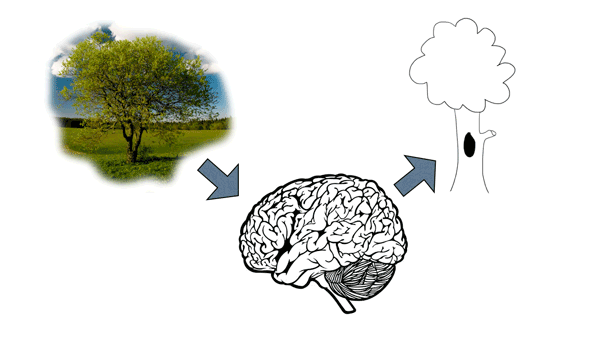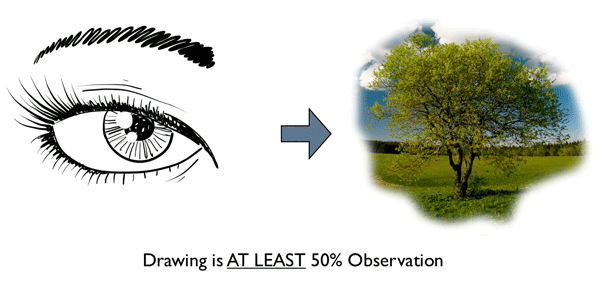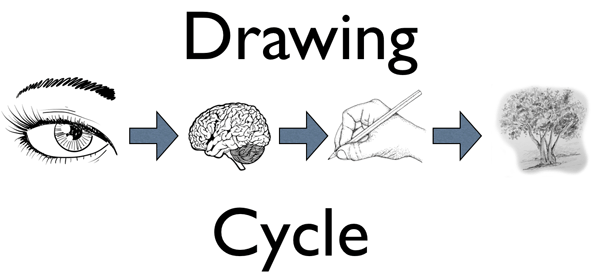
Ever wonder why some people can draw well and other people just seem to struggle? Do you want to know what’s really happening in the minds of artists? Well, you’ve probably heard that drawing has something to do with the way that we see things. But, that’s not the whole story.
You see, our eyes bring in information, but it’s what happens in the brain that really matters. Our eyes don’t really see anything at all. It’s our brains that do all of the “heavy lifting”.
In fact, if you close your eyes for a moment, you’ll probably experience a restful feeling. This restful feeling is not from your eyes resting. Instead it’s from your brain resting from all that information that your eyes are bringing in.
You see, when we look at a tree, that information is sent to our brains. Then something happens in our brains to produce and image that looks nothing like a realistic tree.

So what we need to do is to fix our brains. We need to train our brains to see in the manner that we process information with our eyes, so that when we draw a tree, we get a result that looks realistic.
We need to be able to process the abstract qualities of what we are seeing and draw those abstract qualities. We need to draw the lines, shapes, forms, textures, and values that we actually see on objects.
When a representational drawing is closely examined, the abstract lines, textures, values, and so on are visible. We process this information as an illusion. Our brains put together the abstract information and make sense of what our eyes are processing.
In order to actually understand what our eyes are seeing, we must look at objects to draw them. In fact, in the drawing process, we should be looking at objects at least half of the time. Drawing is at least 50% observation.

Drawing is actually an information transfer process. Information is recorded by our eyes, processed by our brain, sent to our hands, and manifests on the drawing surface through marks. I like to think of this information transfer as the drawing cycle. This drawing cycle is what representational drawing is all about.

Drawing is a skill. And skills can be learned and developed by anyone. (Yes, this means you.)
So how do you develop and improve drawing skill? Simple - you must practice. And practice. And practice. And practice some more. The more that you practice the drawing cycle, the better you will get at drawing. The more that you draw, the more that you’ll be able to train your brain to see.
So, what are you waiting for? Start drawing anything and everything that you can right now. Start training your brain to see.